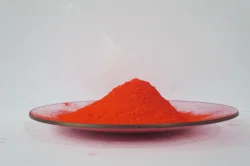Aspects of paint pigments
2024-02-19
Paint pigments are substances added to paint formulations to impart color, hiding power, and other desirable properties. They are finely ground particles that are dispersed in a paint medium to create the desired hue when applied to a surface. Pigments can be derived from natural sources or synthesized chemically. Here are some key aspects of paint pigments:
1. Classification:
- Inorganic Pigments: Derived from minerals and generally more color-stable. Examples include titanium dioxide (white), iron oxide (red, yellow, brown), and chromium oxide (green).
- Organic Pigments: Synthetic pigments made from organic compounds. They offer a wide range of bright and vivid colors. Examples include phthalocyanine blue and quinacridone red.
2. Color Properties:
- Hue: Refers to the name of the color (e.g., red, blue, yellow).
- Chroma: Describes the intensity or purity of the color.
- Value: Indicates the lightness or darkness of the color.
3. Hiding Power:
- Pigments contribute to the hiding power or opacity of a paint. Opacity is the ability of a paint film to conceal the underlying surface.
4. Lightfastness:
- Lightfast pigments resist fading or discoloration when exposed to light. This is an important consideration for ensuring the longevity of painted surfaces.
5. Chemical Stability:
- Paint pigments should be chemically stable to ensure that they do not react with other components in the paint or with environmental factors, leading to color changes or degradation.
6. Types of Pigments:
- White Pigments: Titanium dioxide is a common white pigment, widely used for its excellent hiding power and brightness.
- Earth Pigments: Iron oxide pigments, such as red and yellow ochre, are derived from natural minerals and provide earthy tones.
- Blues and Greens: Phthalocyanine pigments are commonly used for vibrant blue and green hues.
- Reds and Yellows: Cadmium pigments, although toxic, were historically used for brilliant reds and yellows. Alternatives like azo pigments are now commonly used.
7. Specialty Pigments:
- Pearlescent Pigments: Create a pearlescent or metallic effect.
- Fluorescent Pigments: Emit visible light when exposed to ultraviolet light.
- Interference Pigments: Create iridescent effects by reflecting and refracting light.
8. Application:
- Pigments are incorporated into various types of paints, including watercolors, oil paints, acrylics, and industrial coatings.
9. Regulatory Considerations:
- Some pigments may contain hazardous components, and their use is subject to regulations to ensure safety for both users and the environment.
Paint manufacturers carefully select and formulate pigments based on the desired color palette, performance characteristics, and intended application of the paint. The choice of pigments can significantly impact the appearance, durability, and overall quality of the painted surface.



